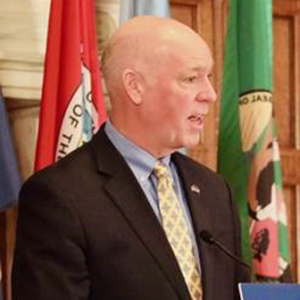Only six governors in the country earned a grade of “A” from the Cato Institute, and Montana’s Governor Greg Gianforte is one of them.
Cato has released a report that grades governors on their fiscal policies from a limited government perspective. Governors receiving an A are those who have cut taxes and spending the most, whereas governors receiving an F have increased taxes and spending the most.
Cato explained the emphasis on governors stating, “Governors play a key role in state fiscal policy. They propose budgets, recommend tax changes, and sign or veto tax and spending bills. When the economy is growing, governors can use rising revenues to expand programs or they can return extra revenues to the public through tax cuts. When the economy slows and budgets go into deficit, governors can respond by raising taxes or trimming spending.”
The report said that Gianforte cut income tax rates and succeeded in a series of bills. In 2021, he cut the top individual income tax rate from 6.9 percent to 6.5 percent and collapsed seven income tax brackets to two. He expanded the standard deduction and repealed tax credits. Further reforms in 2023 cut the top individual income tax rate to 5.9 percent. He has also cut the capital gains tax rate and increased the exemption level for taxing business equipment.
Besides Gianforte governors receiving a grade of A are Kim Reynolds of Iowa, Jim Pillen of Nebraska, Jim Justice of West Virginia, Sarah Huckabee Sanders of Arkansas, and Kristi Noem of South Dakota.
Six governors receiving an F are Tony Evers of Wisconsin, John Carney of Delaware, Jay Inslee of Washington, Janet Mills of Maine, Kathy Hochul of New York, and Tim Walz of Minnesota.
All the governors receiving an A on this year’s report are Republicans, and all the governors receiving an F are Democrats.
The report is the 17th biennial fiscal report card, having been issued since 2022. It uses statistical data to grade the governors on their tax and spending records: Governors who restrained taxes and spending receive higher grades, while governors who substantially increased taxes and spending receive lower grades.
To spur growth, half the states have cut their individual or corporate income tax rates in recent years, and some states have converted their multirate individual income taxes into single-rate flat taxes. Unfortunately, many states have also been larding their tax codes with special interest breaks for filmmaking, green energy, and other politically favored industries.
Another trend affecting state budgets is the expansion of school choice programs. More than 30 states now provide support for private schooling through various tax and spending mechanisms. A dozen states have made eligibility for their school choice programs universal or near universal for all students.
Most states are enjoying surpluses today, but they differ in their budget preparations for tomorrow. Debt levels, rainy day funds, and unfunded retirement obligations vary widely by state.
When the economy is growing and revenues are rising, Democrats tend to increase spending, whereas Republicans tend to both increase spending and cut taxes. Recently, state budget surpluses have been so large that both Republicans and Democrats have cut taxes, although the Democratic cuts have often been one-time rebates, which are scored lower on this report than the permanent cuts favored by Republicans.
Tax and spending data for the report come from the National Association of State Budget Officers (NASBO), the National Conference of State Legislatures, the Tax Foundation, the budget agencies of each state, and news articles. The data cover the period from January 2022 to August 2024.1 The report rates 48 governors. It excludes the governor of Louisiana because he has been in office only a brief time, and the governor of Alaska because of peculiarities in that state’s budget.


